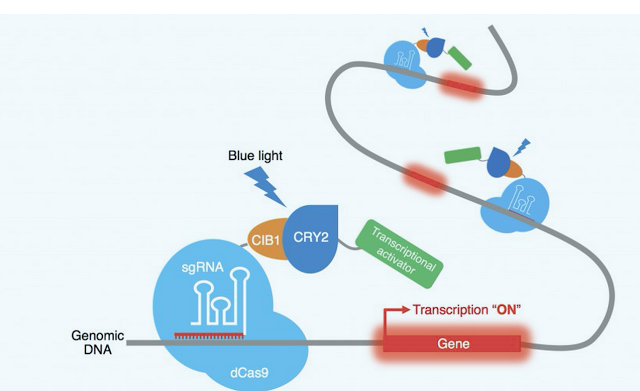Japanese researchers led by University of Tokyo chemist Moritoshi Sato have refined the CRISPR-Cas9 method by developing alight-activated Cas9 nuclease, a technological advancement that significantly improves scientists’ ability to hone in on target genes for research. Converging these two methods brings specificity on a new level, making for increased spatial and temporal control over the system. Essentially providing scientists with an on/off switch for genes, this new method brings unprecedented precision to gene editing, something scientists have been seeking for. Scientists involved in the research engineered photoreceptors that developed pairs of photo switches called Magnets. These magnets were specifically designed to recognize each other based on electrostatic interactions. These interactions can be activated by light, thereby providing a way to analyze specific genes without activating or inactivating unnecessary DNA components. With these Magnets, Sato’s team was able to engineer a photoactivatable Cas9 nuclease (paCas9) for light-controlled genome editing.
The issue with the current version of the Cas9 nuclease is that it does not allow scientists to hone in on specific cells in specific areas. Difficult to control, the CRISPR-Cas9 system sans Optogenetics was not the most effective way for researchers to learn about the genome. In order to create this new, innovative method, Sato and his team split the Cas9 protein in half, inactivating it and pairing each half with a Magnet. When activated by blue light, the Magnets came together, pushing both halves of the Cas9 nuclease together. Now active, the new complex is now light activated and can turn on and off in the presence or absence of this blue light. Working to expand the colors of light compatible with the system, Sato and his team are working to continue to make genome editing more flexible.
Nature Biotechnology – Photoactivatable CRISPR-Cas9 for optogenetic genome editing
“The [new] study makes use of the split Cas9 architecture to enable light-activated genome editing,” postdoc Fei Ann Ran of Feng Zhang’s lab at the Broad Institute wrote in an e-mail. “It’s a nice demonstration of using the structural knowledge of Cas9 to engineer it for expanded capabilities, and highlights the versatility of the system.”
“My impression is that the light-activated system using the magnet approach works well, and some researchers are likely to find it useful for specific applications,” Knoepfler said. “For instance, there may be specific developmental studies where ultra-precise activation of gene editing such as in a specific developmental domain via a precisely directed beam of light could prove to be a very elegant approach.” He added that it’s not yet clear if the system will be effective in reducing the off-target effects of CRISPR, but that any technology that limits the time during which the gene-editing components are active will likely do so.
Sato’s group now plans to expand the colors of light that can activate the paCas9 nuclease “to make genome editing more flexible,” he said. “For this purpose, development of new photoswitching proteins with color variation appears to be a key element.”
Abstract
They describe an engineered photoactivatable Cas9 (paCas9) that enables optogenetic control of CRISPR-Cas9 genome editing in human cells. paCas9 consists of split Cas9 fragments and photoinducible dimerization domains named Magnets. In response to blue light irradiation, paCas9 expressed in human embryonic kidney 293T cells induces targeted genome sequence modifications through both nonhomologous end joining and homology-directed repair pathways. Genome editing activity can be switched off simply by extinguishing the light. We also demonstrate activation of paCas9 in spatial patterns determined by the sites of irradiation. Optogenetic control of targeted genome editing should facilitate improved understanding of complex gene networks and could prove useful in biomedical applications.
SOURCES – Nature Biotechnology, The Scientist

Brian Wang is a Futurist Thought Leader and a popular Science blogger with 1 million readers per month. His blog Nextbigfuture.com is ranked #1 Science News Blog. It covers many disruptive technology and trends including Space, Robotics, Artificial Intelligence, Medicine, Anti-aging Biotechnology, and Nanotechnology.
Known for identifying cutting edge technologies, he is currently a Co-Founder of a startup and fundraiser for high potential early-stage companies. He is the Head of Research for Allocations for deep technology investments and an Angel Investor at Space Angels.
A frequent speaker at corporations, he has been a TEDx speaker, a Singularity University speaker and guest at numerous interviews for radio and podcasts. He is open to public speaking and advising engagements.


